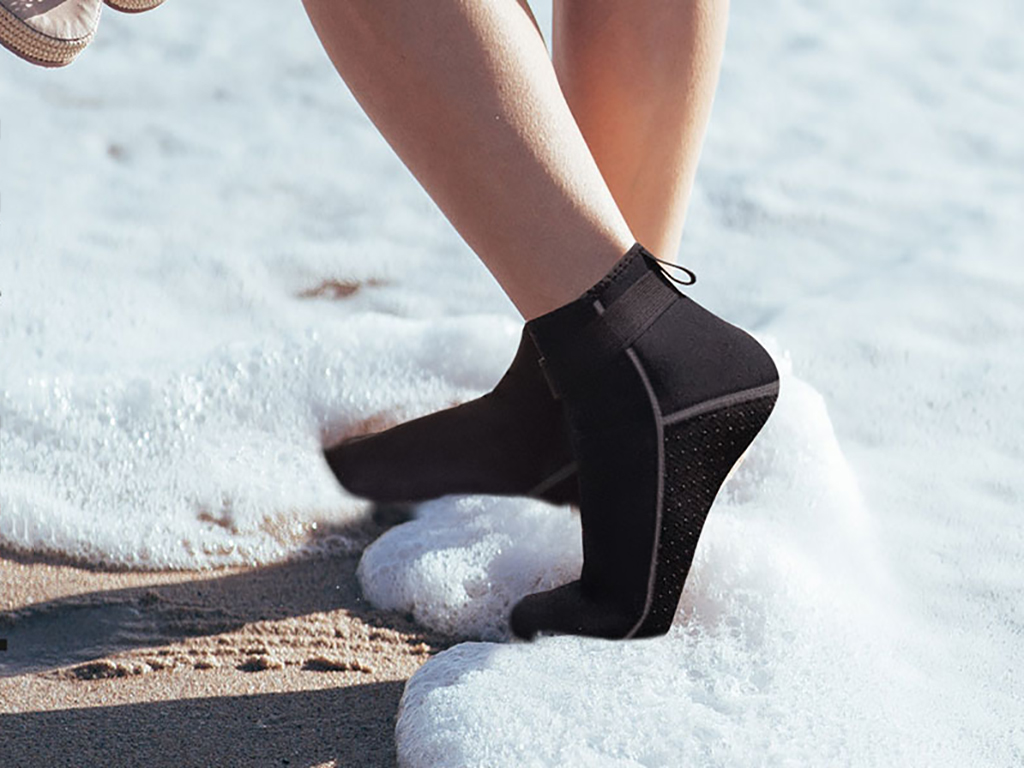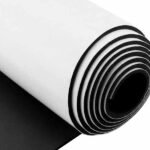Have you ever been out in the cold, your feet aching from wetness and discomfort, wondering if there’s a better solution? It’s disheartening to invest in socks that fail to keep you dry and warm during your outdoor adventures. Imagine hiking through a chilly river, only to have your feet soaked and numb. This common frustration can ruin your experience and leave you searching for reliable alternatives. But what if there’s a sock that combines durability, comfort, and waterproofing to enhance your outdoor activities?
Neoprene socks are specialized footwear designed to keep your feet dry and warm in various wet and cold conditions. Their unique material and construction make them ideal for outdoor enthusiasts and professionals alike.
Let me share a personal story about my first experience with neoprene socks and how they completely transformed my outdoor adventures.
What Are the Key Features of Neoprene Socks?
Neoprene socks are more than just waterproof footwear. What exactly sets them apart from regular socks?
Neoprene socks are crafted from high-quality neoprene material, providing durability, flexibility, and superior waterproofing.
Dive Deeper: Key Features of Neoprene Socks
Neoprene socks are made from synthetic rubber known for its resilience and elasticity. This material ensures that the socks conform to the shape of your feet, offering a snug and comfortable fit. Additionally, neoprene is resistant to wear and tear, making these socks ideal for harsh environments. The design often includes reinforced stitching and seamless construction to prevent water ingress and enhance durability. Some models also feature anti-slip soles and thermal linings to provide extra functionality and comfort.
| Feature | Description |
|---|---|
| Material | High-grade neoprene for elasticity and durability |
| Waterproofing | Sealed seams and seamless construction to prevent water entry |
| Insulation | Thermal lining to retain heat in cold conditions |
| Anti-slip Soles | Enhanced grip to prevent slipping in wet environments |
| Customizable Design | Options for colors, patterns, and branding to meet specific needs |
What is the Purpose of Neoprene Socks?
Understanding the primary function of neoprene socks can help you determine if they’re the right choice for your activities. What is their main purpose?
Neoprene socks are designed to keep your feet dry and warm in wet and cold environments, enhancing comfort and performance during outdoor activities.
Dive Deeper: Purpose of Neoprene Socks
Neoprene socks serve to protect your feet from water and cold, making them essential for activities like fishing, kayaking, and hiking in wet terrains. By keeping your feet dry, they prevent discomfort and reduce the risk of conditions like frostbite in cold climates. Additionally, the insulation properties help maintain body heat, allowing for prolonged outdoor activities without the adverse effects of cold exposure.
Do Your Feet Get Wet in Neoprene Socks?
A common concern with any waterproof gear is whether it truly keeps moisture out. Do neoprene socks prevent your feet from getting wet?
Neoprene socks are highly effective at keeping your feet dry by providing a waterproof barrier that prevents water from seeping in.
Dive Deeper: Waterproof Mechanisms
Neoprene socks utilize sealed seams and a continuous neoprene material layer to ensure that water cannot penetrate. The lack of traditional stitching reduces potential entry points for water. Additionally, the elastic nature of neoprene creates a tight seal around the ankles, minimizing gaps where water could enter. This construction makes neoprene socks an excellent choice for activities where keeping feet dry is crucial.
How Are Neoprene Socks Manufactured?
The manufacturing process of neoprene socks plays a crucial role in their quality and functionality. How are these specialized socks made?
Neoprene socks are manufactured through a meticulous process that ensures each pair meets high standards of quality and performance.
Dive Deeper: Manufacturing Process of Neoprene Socks
- Material Sourcing: High-grade neoprene is sourced from reliable suppliers to ensure consistency and quality.
- Cutting and Shaping: Neoprene sheets are precisely cut into sock shapes using advanced cutting machines.
- Stitching and Sealing: The cut pieces are stitched together using reinforced seams. Some manufacturers use heat sealing to ensure waterproof integrity.
- Adding Features: Features like anti-slip soles, thermal linings, and reinforced areas are added during this stage.
- Quality Control: Each pair undergoes rigorous testing for durability, waterproofing, and comfort before packaging.
- Packaging: Finally, the socks are packaged according to customization specifications, ready for shipment.
How Do You Use Neoprene Wading Socks?
Neoprene wading socks are versatile tools for various outdoor activities. How can you effectively use them in your adventures?
Neoprene wading socks are used to protect your feet from cold and wet conditions, providing comfort and performance during activities like fishing, kayaking, and wading through water.
Dive Deeper: Practical Applications
When fishing or kayaking, neoprene wading socks keep your feet warm and dry, allowing you to stay comfortable for extended periods. Their waterproof nature prevents water from entering, while the insulation retains body heat, crucial for maintaining circulation in cold water environments.
Dive Deeper: Hiking and Trekking
During hiking or trekking in wet terrains, neoprene socks provide a protective barrier against mud, water, and rough surfaces. Their durability ensures they can withstand abrasive conditions, reducing the risk of blisters and foot fatigue.
Dive Deeper: Water Sports and Recreational Use
For water sports enthusiasts, neoprene socks offer both protection and performance. They prevent water from soaking in, which can cause discomfort and reduce agility. Additionally, the anti-slip soles enhance stability on wet surfaces, improving safety during high-energy activities.
How Do Neoprene Socks Compare to Traditional Socks?
When choosing socks, it’s essential to understand how different materials perform. How do neoprene socks stack up against traditional socks?
Neoprene socks outperform traditional socks in waterproofing, insulation, and durability, making them superior for specific applications.
Dive Deeper: Performance in Wet Environments
Unlike cotton or wool socks, neoprene socks do not absorb water, keeping your feet dry and comfortable. Traditional materials can become saturated, leading to discomfort and increased risk of cold-related issues.
Dive Deeper: Insulation and Comfort
Neoprene provides better thermal insulation compared to traditional materials, ensuring your feet remain warm in cold conditions. The elastic nature of neoprene offers a comfortable fit that adapts to your foot shape, reducing the likelihood of blisters and enhancing overall comfort.
Dive Deeper: Durability and Longevity
Neoprene socks are more resistant to wear and tear, maintaining their integrity and functionality over time. Traditional socks may lose their shape and effectiveness after repeated use, especially in harsh conditions, whereas neoprene maintains its performance characteristics.
Are Neoprene Socks Suitable for All Weather Conditions?
Neoprene socks are known for their versatility, but are they effective in every type of weather? Are neoprene socks suitable for all weather conditions?
Neoprene socks are highly effective in cold and wet conditions, but their performance can vary in extreme temperatures.
Dive Deeper: Cold and Wet Climates
In cold and wet climates, neoprene socks excel by providing excellent thermal insulation and waterproofing. This makes them perfect for winter sports, fishing in cold waters, and other activities in chilly environments. The material retains heat efficiently, preventing heat loss and keeping your feet warm even in freezing temperatures.
Dive Deeper: Hot and Dry Conditions
While neoprene socks offer great protection in wet conditions, they may not be as comfortable in hot and dry climates due to their limited breathability. In such environments, neoprene can cause overheating and excessive sweating, making them less suitable. However, lighter neoprene blends with ventilation features can mitigate these issues to some extent.
Dive Deeper: Extreme Weather Considerations
In extreme weather conditions, additional features like ventilation panels or lighter neoprene blends can enhance comfort and performance. It’s important to choose the right type of neoprene sock based on the specific weather conditions you expect to encounter. For instance, using thinner neoprene for milder conditions and thicker variants for harsher climates ensures optimal performance.
How Do Neoprene Socks Contribute to Performance and Comfort?
Performance and comfort are crucial for any outdoor gear. How do neoprene socks enhance these aspects?
Neoprene socks improve athletic performance and provide superior comfort through their unique material properties and thoughtful design features.
Dive Deeper: Athletic Performance
Neoprene socks offer excellent flexibility and support, allowing for a full range of motion during physical activities. This enhances performance by reducing fatigue and improving stability, essential for sports like kayaking and fishing. The snug fit ensures that the socks stay in place, preventing distractions and discomfort during intense activities.
Dive Deeper: Comfort Features
The soft and elastic nature of neoprene ensures a snug fit that minimizes friction and prevents blisters. Additionally, the thermal insulation keeps feet warm, reducing discomfort during long periods of wear. Features like seamless construction and reinforced stitching further enhance comfort by eliminating pressure points and providing a smooth surface against the skin.
Dive Deeper: Injury Prevention
Neoprene socks provide compression and support, which can help reduce the risk of injuries and improve recovery times. The material’s elasticity promotes better blood circulation, reducing muscle soreness and fatigue. This is particularly beneficial for athletes and professionals who are on their feet for extended periods, as it helps maintain foot health and overall performance.
Do Neoprene Socks Offer Thermal Insulation?
Thermal insulation is a key feature for maintaining warmth. Do neoprene socks provide effective insulation?
Yes, neoprene socks offer excellent thermal insulation, keeping your feet warm in cold and wet environments.
Dive Deeper: Heat Retention Mechanism
Neoprene traps a thin layer of water between the sock and the skin, which is then heated by the body. This creates a warming effect that keeps the feet warm even in freezing temperatures. The material’s inherent insulation properties prevent heat loss, ensuring that your feet remain comfortable and protected against the cold.
Dive Deeper: Comparison with Other Insulated Socks
Compared to wool or synthetic insulated socks, neoprene provides more consistent warmth in wet conditions. Wool can lose its insulating properties when wet, while neoprene maintains heat effectively, making it a superior choice for activities involving prolonged exposure to moisture.
Dive Deeper: Applications Requiring Thermal Insulation
Activities such as ice fishing, diving, and winter hiking greatly benefit from the thermal insulation provided by neoprene socks. This ensures comfort and safety by preventing cold-related foot issues, allowing you to focus on your activities without the distraction of discomfort or coldness.
How Do You Wash Neoprene Socks?
Proper maintenance is essential for longevity. How should you wash neoprene socks to keep them in optimal condition?
Regular cleaning, proper drying, and careful storage are key to maintaining the waterproof and insulating properties of neoprene socks.
Dive Deeper: Cleaning Instructions
After each use, rinse neoprene socks with fresh water to remove salt, sand, and debris. Use a mild soap or specialized neoprene cleaner to gently clean the surface. Avoid harsh detergents and bleach, as they can degrade the material and compromise waterproofing. Hand washing is recommended to preserve the integrity of the neoprene.
Dive Deeper: Drying Techniques
Dry neoprene socks away from direct sunlight and heat sources to prevent the material from becoming brittle. Hang them in a well-ventilated area to ensure thorough drying and to maintain their shape. Avoid using tumble dryers or exposing the socks to high temperatures, as this can cause shrinkage and damage the neoprene.
Dive Deeper: Storage Tips
Store neoprene socks in a cool, dry place, preferably hanging to avoid creases and wrinkles. Using breathable storage bags can help prevent mold and mildew growth, extending the lifespan of the socks. Keeping them away from sharp objects and extreme temperatures also helps maintain their condition and performance over time.
Conclusion
In summary, neoprene socks are a versatile and high-performance solution for keeping feet dry and warm in various conditions. Their exceptional waterproofing, thermal insulation, and durability make them ideal for a wide range of applications, from outdoor sports to medical use. At Szoneier, we leverage our extensive manufacturing experience and advanced production capabilities to deliver top-quality neoprene socks tailored to your specific needs. Our commitment to customization, sustainability, and exceptional customer service ensures that you receive products that not only meet but exceed your expectations. Whether you are a brand owner, wholesaler, or retailer, partnering with us means gaining a reliable supplier dedicated to your success.











